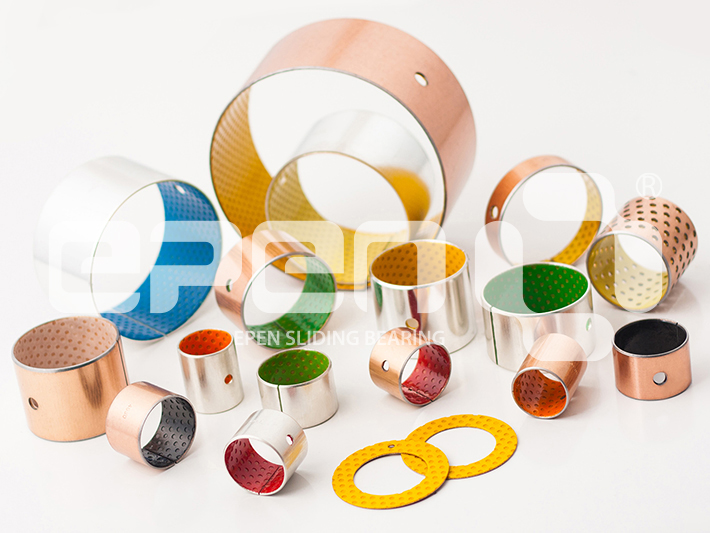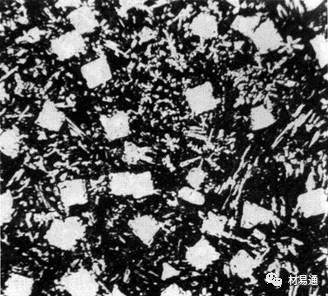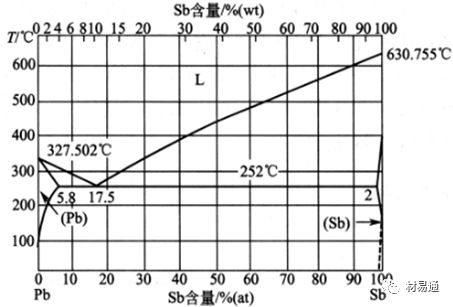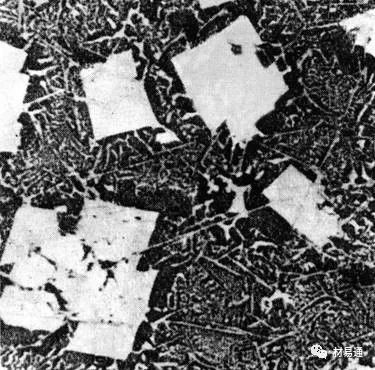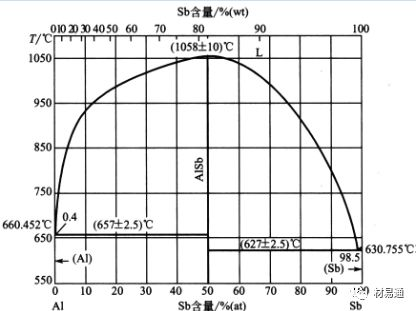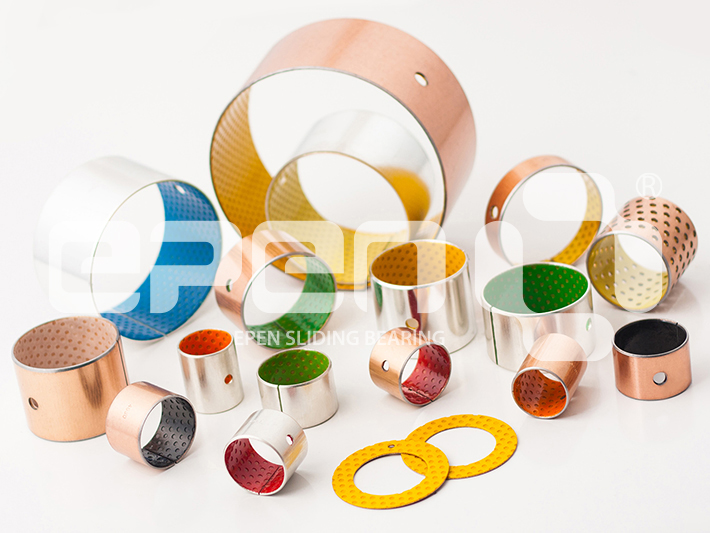01 Performance requirements of bearing alloy
The sliding bearing is a part used to support the shaft in the machinery manufacturing industry such as automobiles, tractors and machine tools. It is composed of bearing shells and sleeves. The wear-resistant alloy used to make bearing shells and linings is called bearing alloy. When the shaft rotates at a high speed in the bearing pad, strong friction will inevitably occur. At the same time, the bearing pad will also bear the periodic load transmitted to it by the journal. Therefore, the shaft and bearing bush must be worn. Shafts are usually expensive and often uneconomical to replace. The selection of bearing alloy meeting certain performance requirements can ensure the minimum wear of the shaft.
Properties of bearing alloy:
① It is wear-resistant and has a small friction coefficient to reduce shaft wear.
② It has high fatigue strength and compressive strength to withstand huge cyclic load.
③ It has enough shaping and toughness to resist impact and vibration and improve the running in performance of shaft and bearing bush.
④ It has good thermal conductivity and corrosion resistance to prevent the engagement of bearing bush and shaft due to strong friction and temperature rise, and can resist the corrosion of lubricating oil.
In the alloy structure, if a certain size of hard spots (or a certain size of soft particles) are uniformly distributed on the soft matrix, the above performance requirements can be basically met. When the shaft is running in the bearing, the soft base (or particle) is easy to wear and sag, while the hard base (or particle) protrudes for bearing and wear resistance. In this way, the contact area between the shaft and the bearing pad is reduced, and the space between them can store lubricating oil, which reduces the friction coefficient of the shaft and the bearing and reduces wear. The soft base or particle can withstand impact and vibration and make the shaft and bearing bush run in well. In addition, the soft substrate or particle can be embedded with foreign hard spots accidentally entered to avoid scratching the journal.
Common bearing alloys can be divided into tin base, lead base, aluminum base, copper base and iron base according to their main chemical composition. Among them, tin based and lead based bearing alloys, also known as babbitt alloys, are the most widely used bearing alloys.
02 Tin based bearing alloy
Tin based bearing alloy is mainly composed of tin and a small amount of antimony, copper and other elements. The most commonly used tin base bearing alloy is ZSnSb11Cu6, which contains about WSb=11% of Sb, WCu=6% of Cu, and the rest is Sn. Sb and Cu dissolved in Sn α The solid solution is a soft matrix (black part in Figure 1), while the compounds Cu3Sn (white needle or star shape in Figure 1) and SnSb (white square or polygon shape) formed by Sn, Sb and Cu are hard spots. When WCu=6%, high melting point compound Cu3Sn is formed, which can prevent the solid solution based on SnSb from floating up in the solution, prevent specific gravity segregation, and improve the wear resistance of the alloy.
Fig. 1 Microstructure of ZSnSb11Cu6 Alloy
Tin based bearing alloy has small friction coefficient, good plasticity and heat conductivity, and is an excellent antifriction material. It is applied to the most important bearings, such as high-speed bearings used to cast heavy machinery such as steam turbines, engines, compressors, etc., with the working temperature not exceeding 150 ℃.
The strength of tin based bearing alloy, especially the fatigue strength, is low. Bimetal bearings are often used in production, that is, centrifugal casting method is used to cast a thin layer of tin based bearing alloy on the low-carbon steel bearing pad, which improves the strength and life of the bearing and saves a lot of tin based bearing alloy.
03 Lead based bearing alloy
Lead based bearing alloy is mainly composed of lead and a small amount of antimony, tin, copper and other elements. It can be used as a substitute for tin based bearing alloy. Among them, Pb Sb alloys are the most widely used.
Pb Sb binary alloy phase diagram (Fig. 2) has eutectic transformation. WSb in eutectic composition is 11.2%. The content of Sb in the figure is between 17.5% and 20%, which is the room temperature structure of the alloy β Phase hard particle sum( α+β) Eutectic soft matrix composition. However, the binary Pb Sb alloy also has severe segregation, and β The phase is very brittle, easy to break, and the matrix is too soft and easy to wear, so Pb Sb alloy also adds other elements such as Cu and Sn. The addition of Cu can form Cu3Sn to prevent specific gravity segregation, and can also form Cu2Sb hard spots to improve the wear resistance of the alloy. Adding Sn can form metal compound SnSb hard spots, which can be dissolved in lead to strengthen the matrix, so the strength and wear resistance of the alloy can be improved. ZPbSb16Sn16Cu2 is the most commonly used lead based bearing alloy in industry, with WSb=16%, WSn=16% and WCu=2%, belonging to hypereutectic alloy. In its organization( α+β) The eutectic is a soft matrix, the white square is the compound SnSb, and the white needle crystal is the compound Cu3Sn. Nascent β The compounds Cu2Sn and SnSb are hard spots in the alloy (see Figure 3).
Fig. 2 Pb Sb Alloy Phase Diagram
Fig. 3 Microstructure of ZPbSb16Sn16Cu2
Lead based bearing alloys can be made into double-layer or three-layer metal structures. Although their strength, hardness and wear resistance are lower than those of tin based bearing alloys, the cost is reduced due to the reduction of tin content. In addition, it has good casting performance and wear resistance, and is generally used to manufacture bearing shells with medium and low loads, such as automobile and tractor crankshaft bearings.
04 Aluminum base bearing alloy
Aluminum base bearing alloy is a new antifriction material developed in 1960s. Our country also gradually uses it to replace tin based, lead based and copper based bearing alloys, thus saving a lot of industrial copper. Aluminum bearing alloy is rich in resources, low in price, high in fatigue strength, good in thermal conductivity, and its corrosion resistance is no less than that of tin antimony babbitt alloy. Therefore, aluminum based bearing alloys are widely used in diesel engine bearings of automobiles and tractors working at high speed and high load.
Common aluminum base bearing alloys include Al Sb bearing alloy and Al Sn bearing alloy.
(1) Al Sb bearing alloy
WSb=3.5%~5%, WMg=0.3%~0.7%, and the rest is Al. It can be seen from Fig. 4 that the AlSb with WSb=4% becomes flaky, improving the plasticity, toughness and strength of the alloy. The microstructure of Al Sb alloy is that the hard spots of metal compounds AlSb and Mg3Sb2 are uniformly distributed on the soft aluminum based solid solution. The alloy uses low carbon steel as the backing, and the Al Sb Mn bearing alloy is cast on the steel backing to form a bimetallic bearing, or it is rolled into a bimetallic steel strip by compounding with low carbon steel strip.
Fig. 4 Al Sb Alloy Phase Diagram
Al Sb bearing alloy has high fatigue resistance and wear resistance, but its bearing capacity is not large. It is used in medium load internal combustion engines.
(2) Al Sn bearing alloy
High tin aluminum base bearing alloy has higher bearing capacity and fatigue strength. It is rolled into bimetallic bearing bush together with low carbon steel, and can work under the condition of 28MPa pressure and 13m/s sliding linear speed. Its anti seizure performance is equivalent to that of Babbitt alloy. The chemical composition of high tin aluminum base bearing alloy is WSn=20%, WCu=1%, and the rest is Al. The solubility of tin in aluminum is very small. The Al Sn alloy with WSn=20% has more eutectic structure, and the aluminum crystal is surrounded by tin network, which greatly reduces the mechanical properties of the alloy. In order to eliminate network eutectic, tin can be spheroidized after casting by rolling with steel back and annealing at 350 ℃ for 3h. Therefore, the actual structure of the alloy is that soft granular tin particles are evenly distributed on the hard aluminum matrix.
The addition of Cu and Ni in Al Sn alloy can further improve the strength of the matrix because they can dissolve in Al.
High tin aluminum base bearing alloy is easy to produce and low in cost. It has been widely used in diesel engine bearings of medium and high speed automobiles and tractors in China, and has replaced babbitt alloy and other bearing materials on many machines. However, if the alloy layer is not firmly combined with the steel back when producing this kind of bearing bush, the alloy layer will peel off at an early stage during use. In order to make the high tin aluminum base bearing alloy and the steel back combine firmly, at present, this bearing is rolled from steel strip, Al Sn alloy and three layers of alloy sandwiched by the middle layer of aluminum foil. During the rolling process, the oxide film on the aluminum surface is broken due to extension, and the remaining oxide film is spheroidized by subsequent recrystallization annealing, so the bonding strength with the steel back is greatly improved.
More about EPEN Multi-layer Sliding Bearings:
EPEN is well-known as one of the leading multi-layer sliding bearings manufacturers and suppliers in China. If you're going to buy top quality multi-layer sliding bearings with competitive price, welcome to get dimensions and specifications from our factory.
In order to enhance the anti-seizure property of the sliding bearing while making the content of Pb contained in the Sn-based overlay layer smaller or while using no Pb if possible, there is provided a multi-layer sliding bearing comprising a back metal layer, a bearing alloy layer, an intermediate plating layer and a Sn-based overlay layer, the Sn-based overlay layer containing reinforcing metal and/or inorganic particles, the content of the reinforcing metal and/or inorganic particles being varied step-wise or successively in a direction of a thickness of the overlay layer so that the content in a thickness-wise central portion of said overlay layer is relatively high and so that another content in a surface portion of the overlay layer is zero or smaller than the content in the central portion.

